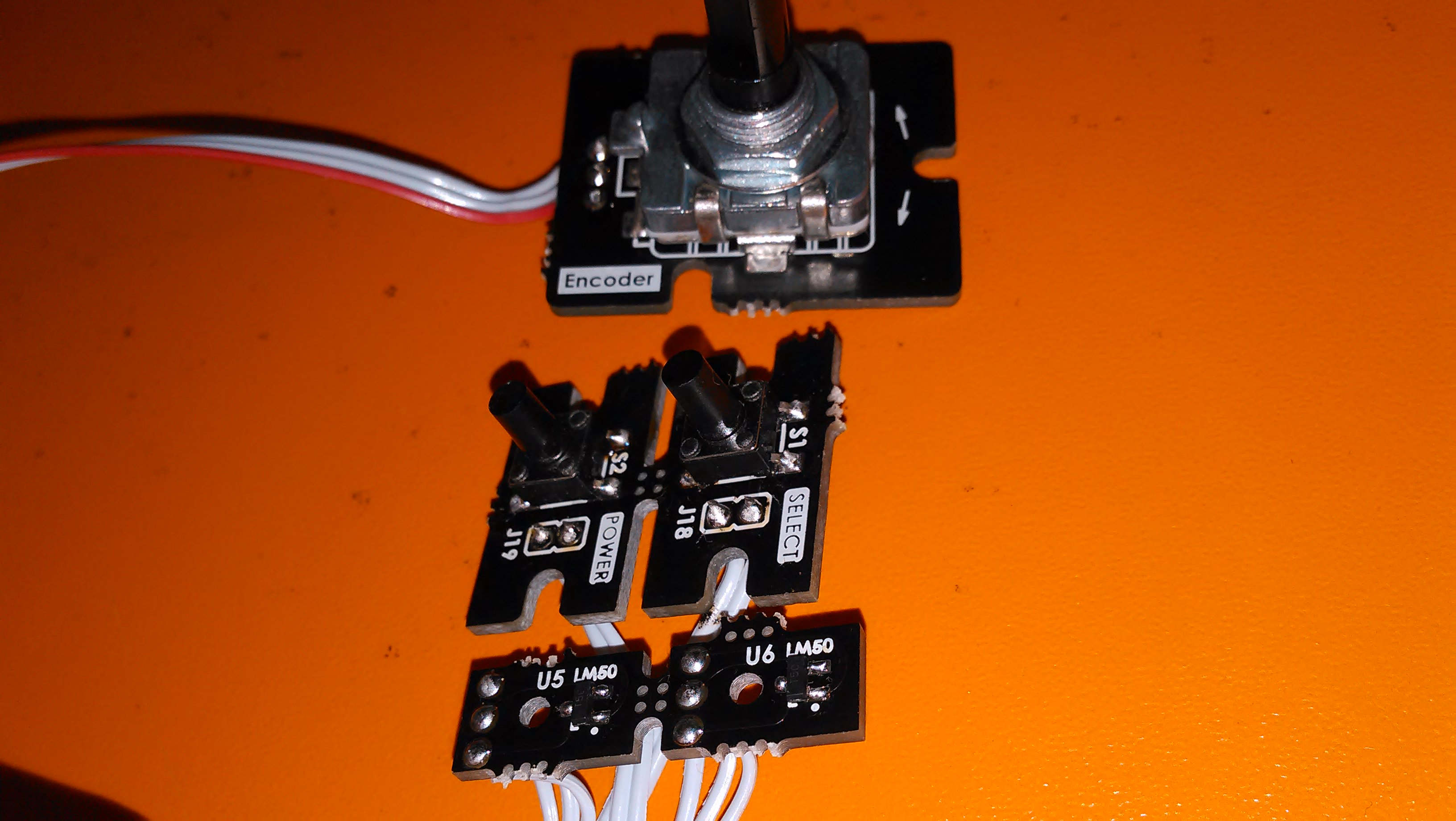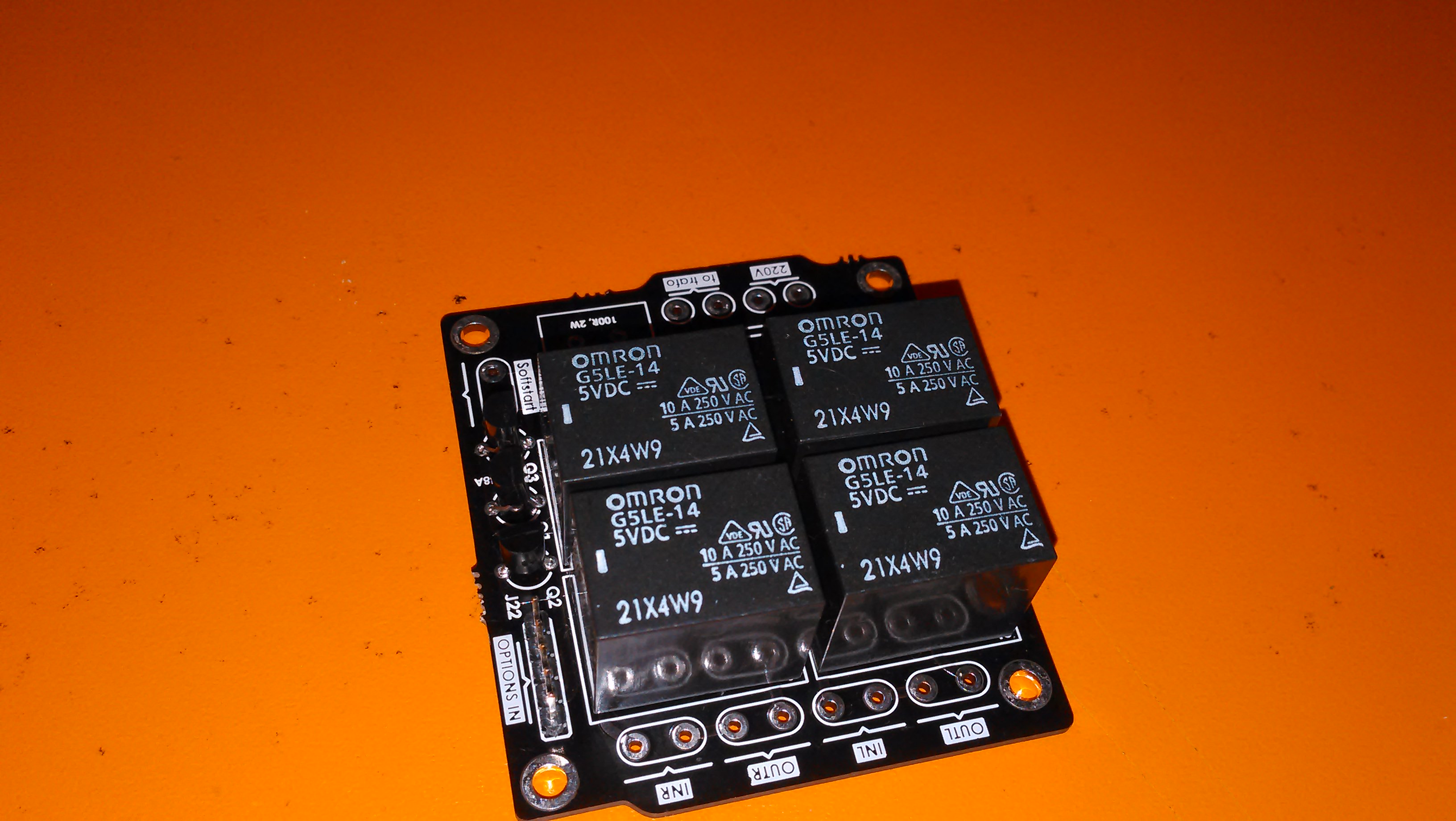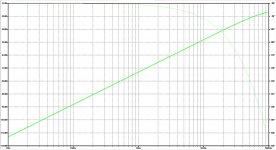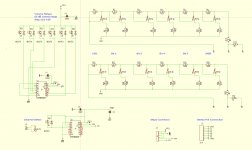I still get emails from people interested in Maya, so here we go. Same prices as on the first GB.
Features:
- R-2R 64 1dB step attenuation
- Android/IOS client for remote control
- infrared remote RC5 protocol with autolearning
- infrared remote NEC protocol for Apple remote (default)
- OLED display
- 4 selectable inputs
- independent volume control for each input - very good for A-B source comparison
- extra low noise ground separation between digital and analog circuitry
- inrush current protection
- soft start with speaker protection
- soft turn off with speaker protection
- plate voltage delay for tube pre/amplifiers
- temperature display and monitoring
- temperature protection
- serial I2C bus for unlimited channel extension
- easy direct control and setup with precision optical encoder
Current firmware version is 0.9
More detailed information about Maya is available at vicol audio : MAYA - your ultimate volume-controller
An implementation from first GB Interest check on Vicol Audio Maya R2R Volume controller - Page 12 - diyAudio






Regards,
Tibi
Features:
- R-2R 64 1dB step attenuation
- Android/IOS client for remote control
- infrared remote RC5 protocol with autolearning
- infrared remote NEC protocol for Apple remote (default)
- OLED display
- 4 selectable inputs
- independent volume control for each input - very good for A-B source comparison
- extra low noise ground separation between digital and analog circuitry
- inrush current protection
- soft start with speaker protection
- soft turn off with speaker protection
- plate voltage delay for tube pre/amplifiers
- temperature display and monitoring
- temperature protection
- serial I2C bus for unlimited channel extension
- easy direct control and setup with precision optical encoder
Current firmware version is 0.9
More detailed information about Maya is available at vicol audio : MAYA - your ultimate volume-controller
An implementation from first GB Interest check on Vicol Audio Maya R2R Volume controller - Page 12 - diyAudio






Regards,
Tibi
Last edited by a moderator:
What is the time frame on this?
I'll keep it open for entire April.
10 units are ready for shipping, more units will be available in May.
Regards,
Tibi
Bruno Putzeys Balanced Preamp
Hi Tibi,
I've seen some discussion about using your volume controller for Bruno Putzeys Balanced Preamp which I'm very interested. Will this be the thing I should be buying or it wouldn't work without some serious modification to the preamp board. Appreciate your information on this. And I assume I should order a balanced set.
Thanks.
Regards,
Askae
Hi Tibi,
I've seen some discussion about using your volume controller for Bruno Putzeys Balanced Preamp which I'm very interested. Will this be the thing I should be buying or it wouldn't work without some serious modification to the preamp board. Appreciate your information on this. And I assume I should order a balanced set.
Thanks.
Regards,
Askae
Hi Tibi,
I've seen some discussion about using your volume controller for Bruno Putzeys Balanced Preamp which I'm very interested. Will this be the thing I should be buying or it wouldn't work without some serious modification to the preamp board. Appreciate your information on this. And I assume I should order a balanced set.
Thanks.
Regards,
Askae
You would only need one board but, a word of caution here. BPBP uses the volume control in the feedback loop of the OP amp. See discussion.
Isn't this a bit too expensive? Ok, it's a very nice project if you want a real professional result, but I managed to get similar functionality with following part list available from ebay:
1) arduino nano clone: 2eur
2) 4 channel relay board with optocouplers: 2eur
3) LCD 1602: 1.5 eur (4.2 eur for OLED graphic display)
4) IR remote with sensor: 1.5 eur.
5) headers, cables, resistors, etc: 2 eur.
I still need to integrate LDR into this, but I don't expect total to be more than 20 eur.
1) arduino nano clone: 2eur
2) 4 channel relay board with optocouplers: 2eur
3) LCD 1602: 1.5 eur (4.2 eur for OLED graphic display)
4) IR remote with sensor: 1.5 eur.
5) headers, cables, resistors, etc: 2 eur.
I still need to integrate LDR into this, but I don't expect total to be more than 20 eur.
Isn't this a bit too expensive? ...
Beside hardware which is different and entirely designed in-house, what we offer is a custom firmware entirely programmed by us, with support and possibility to adapt to different projects.
Regards,
Tibi
Tibi, I am not disputing that this is very nice project which I'm sure gives a very professional result, which is something I cannot say about mine. I am simply choosing a "more DIY fun and less cost" path for which some of us are here in the first place.
Sorry for barging in, I guess I will start a new thread elsewhere.
Sorry for barging in, I guess I will start a new thread elsewhere.
Hi Askae,
Maya can be integrated with Bruno Putzeys Balanced Preamp as it is. No modifications needed.
For BPBP you need a balanced set.
Regards,
Tibi
The CPU part of Maya has been excellently designed, with just one CPU without any extra supporting hardware to perform all digital functions, to be commanded by a remote control and to steer a display.
A job very well done.
But, it is not doing justice to say that Maya can be integrated with the BPBP, because integration is not possible with the standard MAYA offering.
Maya can only be placed in front of the BPBP, which is absolutely not the same as integrating, thereby making that the pot of the BPBP has to be replaced by two resistors to set the gain in a fixed position, preferably 6dB.
To keep the balanced feature, Maya has to equipped with extra hardware.
The output of Maya will then have to be attached to the input up the BPBP, which output remains the one going to your main-amp.
There are however drawbacks to this setup, degradation of CMRR and the addition of extra noise:
1) With Maya, the input circuitry of the BPBP will be driven from a much higher impedance as was envisioned, 10K for the Maya instead of less than 100 Ohm for a DAC, CD or Phono Amp.
This may seriously affect CMRR.
See the CMRR vs Frequency figure below, for a 1% difference in the full resistor path and 2% for the 100pF input caps of the BPBP.

2) Those dual 10K output Maya resistances will also affect the excellent BPBP noise figure, by adding at least 20nV/rtHz to the input of the pre-amp, in this case the equivalent of 2.8uV over a bandwidth of 20KHz.
Noise of the BPBP alone at the point of entering the volume pot measuring 1.5uV, will be increased to 3.2uV meaning 6.6 dB extra noise.
3) To overcome these drawbacks, a special Volume Control board has been designed to replace the pot in the BPBP, not having any of these drawbacks, fully controlled by the Maya CPU, and still giving 63dB of gain control in 1dB steps.
The so called R-2R board that comes with Maya, will become obsolete when using this latter solution.
Hans
Last edited:
Hi Hans,
Thank you for your clarification. I was in progress of reading BPBP thread and BP documents. Looks to me same approach was adopted by a high-end manufacturer as well.
However, I'm wiling to manufacture your additional board as well, so BPBP builders may take the advantage of both designs.
List is open.
Regards,
Tibi
Thank you for your clarification. I was in progress of reading BPBP thread and BP documents. Looks to me same approach was adopted by a high-end manufacturer as well.
However, I'm wiling to manufacture your additional board as well, so BPBP builders may take the advantage of both designs.
List is open.
Regards,
Tibi
Have added a new column BPBP in https://docs.google.com/spreadsheet...8LCgoa5Lb6z94TKbopFC7S6aw/edit#gid=1638000354
Add number of boards you want. One board is a balanced channel.
Regards,
Tibi
Add number of boards you want. One board is a balanced channel.
Regards,
Tibi
Have added a new column BPBP in https://docs.google.com/spreadsheet...8LCgoa5Lb6z94TKbopFC7S6aw/edit#gid=1638000354
Add number of boards you want. One board is a balanced channel.
Regards,
Tibi
Hi Tibi,
This morning I have posted the Gerbers in this thread, but the posting is no longer there.
Did you receive the Gerbers, or shall I post them again.
Hans
Hi Hans,
Thank you !
We are going to remake PCB in Altium Designer. Will also add 10uF decoupling caps on PCF, as they may trend to oscillate when more relays are driven. Will move smd resistors on bottom of pcb and add a guard plane under relays to isolate resistor network from any emi generated by relays during operation. Gerber files will be made public, on this forum and on my website, as well.
Regards,
Tibi
Thank you !
We are going to remake PCB in Altium Designer. Will also add 10uF decoupling caps on PCF, as they may trend to oscillate when more relays are driven. Will move smd resistors on bottom of pcb and add a guard plane under relays to isolate resistor network from any emi generated by relays during operation. Gerber files will be made public, on this forum and on my website, as well.
Regards,
Tibi
Tibi,Hi Hans,
Thank you !
We are going to remake PCB in Altium Designer. Will also add 10uF decoupling caps on PCF, as they may trend to oscillate when more relays are driven. Will move smd resistors on bottom of pcb and add a guard plane under relays to isolate resistor network from any emi generated by relays during operation. Gerber files will be made public, on this forum and on my website, as well.
Regards,
Tibi
What you probably have is the concept design.
Here below is the final version as used for the PCB design.

It is a lot of work that you are planning to do, for a layout that has completely proven itself in practice with 5 instead of 6 relays without even a hint of noise while switching the relays.
And I am a bit concerned on increasing the dimensions of this PCB in case you would place the larger type of relay that you are currently using.
The IM23TS is not only very small, but also draws only 10mA as against 28mA for most other 5V relays, resulting in a much more relaxed operation for the PCF chips and thereby never exceeding the 100mA max that the PCF may sink when all six relays are driven at the same time.
And as a bonus, this relay will also result in much less EMI.
Nevertheless, in the design are included one 100uF cap and three 100nF caps.
This will be more than sufficient to prevent any PCF from starting to oscillate.
So I see no reason whatsoever to make a re-design from a proven design to a design that will still have to prove itself.
Hans
Last edited:
- Home
- Group Buys
- Maya R2R Advanced Volume controller